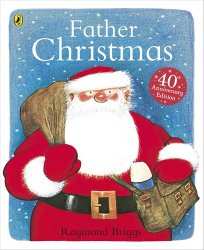There’s an ongoing debate among book folks about literary versus genre fiction. Some people complain that literary fiction indulges a love of language at the expense of plot, leading to boring tomes with beautiful sentences and striking imagery but where nothing happens. Others complain that genre fiction is mindless entertainment, bound by strict genre rules, with little intelligent content.
Still others—people like me—really only want stories. Lists of books I’ve loved inevitably include both literary and genre fiction. I’ve loved books from most genres, primarily mystery, science fiction and fantasy. And I’ve loved plenty of literary novels, yes, even Henry James and William Faulkner with their sentences that go on forever.
My favorite books are set apart by their absorbing stories. What makes a story absorbing? As you can probably guess, the answer touches the basic elements of fiction: complex characters, good plot structure, a pleasing facility with language, and a well-integrated theme. I’ll abandon literary novels with gorgeous language but no plot just as fast as a genre novel with one-dimensional characters.
But there are exceptions.
Oh, there is a plot in Gracq’s award-winning novel. Aldo, scion of an elite family lives a life of heedless pleasure in the capital of the mythical island nation of Orsenna. The ancient culture has grown stale and tired, silted up with now-empty rituals. The aristocrats who run the nation are just going through the motions that previous generations have formalised. Years of peace and plenty mean that only the elderly attain posts in the government, leaving young people little to do once they finish school.
Aldo’s hedonistic lifestyle is interrupted by a call to do his military service. He is sent to the ancient outpost of Syrtes as an observer. He finds a rundown naval base where the handful of officers spend their days hunting and the soldiers are rented out to nearby farmers. Although Syrtes is the first defense against Farghestan, the country on the mainland with whom Orsenna has been at war for three hundred years, the war has been dormant for so long that it seems only a rumor from the past.
Plunged into this damp miasma of empty days where everyone goes through the ancient rituals without believing that they are needed anymore, Aldo catches glimpses of ancient glory. And, as the observer, he begins to hear whispers. Strange encounters start to build a sense of impending action, action that calls to the young Aldo, whose impatience to do something, anything, is growing.
Marino, who commands the base, tells him, “‘Like you, I used to think something extraordinary had to happen to me. I believed it was my fate. You’ll grow old, just as I have, Aldo, and you’ll understand. Extraordinary things don’t happen. Nothing happens.’”
It’s an unusual and intriguing theme: transgression, even destruction, as a way of breaking out of stasis, a way to finally feel alive and that your life has meaning.
I should have been dismayed by how slowly this story, told through Aldo’s consciousness, develops. The inertia confining him and his culture is reflected in the story’s pace. It only begins to disperse further in. Yet far from being bored, I was captivated. Why? Because of the language.
Gracq’s sentences are packed with fresh and startling images that made me gasp with recognition and pleasure. The sometimes dense paragraphs reward close attention by vividly bringing to life not just the physical environment, but the feel of the place, as well as the twists and turns of Aldo’s thoughts and emotions and understanding. I felt that I lived this story, with an intensity I’ve rarely experienced.
Although published in 1986, the story has much to say to our current Western culture, where entertainment has pushed aside information in much of our media, as well as in other present-day cultures where young people are pushing aside the shell of the past and struggling to remake their worlds, for better or worse.
What book are you ending the year with?







